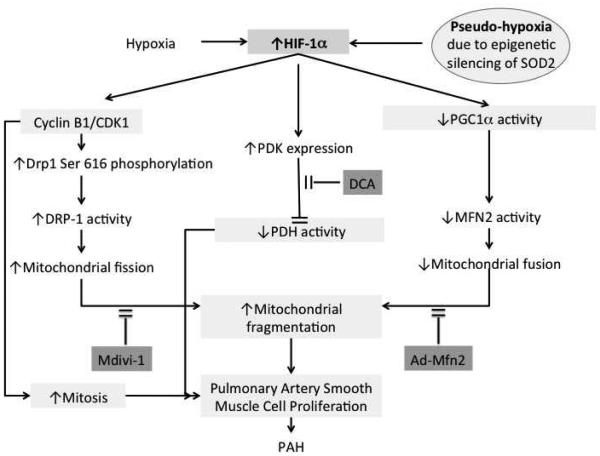Figure 2.
Model showing how conditions associated with hypoxia promote hypoxia-inducible factor-1α (HIF-1α) regulation of mitochondrial fission and fusion of pulmonary artery smooth muscle cells (PASMCs). Additionally, HIF-1α regulates pyruvate dehydrogenase kinase (PDK) expression. PDK phosphorylates and deactivates pyruvate dehydrogenase (PDH) thereby to altered PASMC metabolism and contributing to increased mitochondrial fragmentation. The effect of PDK on PDH can be blocked by dichloroacetate (DCA). Mdivi-1 inhibits the effects of dynamin-related protein 1 (DRP-1) on mitochondrial fission. These effects contribute to pulmonary arterial smooth proliferative remodeling and pulmonary arterial hypertension (PAH). Increased HIF-1α decreases peroxisome proliferator-activated receptor γ coactivator 1α (PGC1α), which results in a decrease in mitofusin-2 (MFN2) and an increase in mitochondrial fragmentation. The effects of decreased MFN2 can be reduced by administration of Adenovirus labeled with MFN2 (Ad-MFN2). HIF-1α can be increased by both hypoxia and pseudohypoxia, which can occur in the setting of epigenetic downregulation of superoxide dismutase 2 (SOD2).

